The Balkan road trip continues. The next destination is Bosnia and Herzegovina. I arrived at midnight in Mostar, a city in southern Bosnia and Herzegovina, after a three-hour journey from Split, Croatia. The trip was smooth, even with the border crossing. At the border, passengers didn’t need to get off the bus for passport checks; immigration officers boarded the bus to collect and stamp passports before returning them.
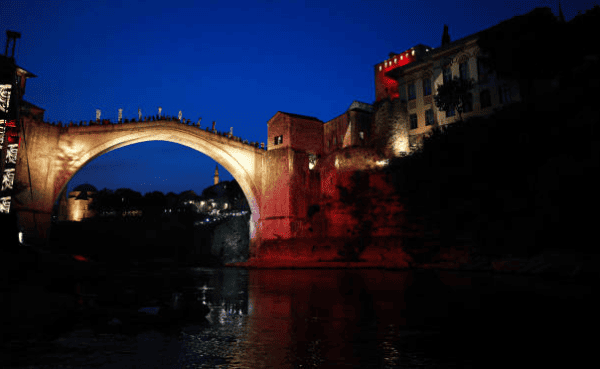
Before leaving Split, I had informed the guesthouse of my late arrival, and they didn’t mind. When I arrived, a tall man opened the door, looking like someone of Turkish descent. There’s a reason why many Bosnians resemble Turks, as I would learn the next day by observing the scenery and people in Mostar.
Bosnia and Herzegovina is a small country that was once part of Yugoslavia, located in the Balkan region. Despite its communist Yugoslav past, Bosnia and Herzegovina is deeply infused with Islamic culture. The Ottoman Empire ruled here for around 400 years, and many Bosnians embraced Islam, a legacy that persists to this day.
Today, about 50-60% of Bosnians are Muslim, with the remainder being Catholic and Orthodox Christians. The family of Adi, the owner of the guesthouse where I stayed, is Muslim, so I felt comfortable enjoying the breakfast they provided.
In Mostar, Ottoman-style mosques and other remnants of the Ottoman Empire can be found. From the second floor of the hostel, I could see the tall, pencil-shaped minarets characteristic of Ottoman mosques. After breakfast, I set out to explore Mostar.
Mostar’s main tourist attraction is the Old Town, home to the famous Stari Most bridge. The Old Town of Mostar was established by the Ottoman Empire in the 15th and 16th centuries as a border town. It’s located on both sides of the Neretva River, connected by the Stari Most bridge.
From the moment I stepped out of Adi’s Guesthouse, I felt like I was in Turkey. In Mostar’s Old Town, there are many Turkish-style houses, mosques, and Turkish baths or hammams. Only the language reminded me I was actually in Bosnia and Herzegovina.
The first Turkish-style building I saw was the Roznamedži Ibrahim-efendije džamija, a mosque located at a crossroads near the Most Musala bridge. Then, I visited the Karadjoz Bey Mosque, built in 1557 by architect Mimar Sinan, which is said to be the most beautiful mosque in the Herzegovina region.
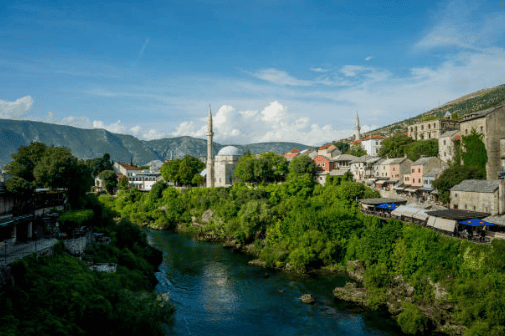
Near this mosque, there’s the Museum of War and Genocide Victims and the Biscevic House, a classic Ottoman-era residence. Another mosque with a strong Ottoman influence is the Koski Mehmed Pasha Mosque, located just north of the Stari Most bridge. Nearby is the Old Bazaar Kujundziluk, an open-air Turkish-style market along the Neretva River.
The narrow, cobbled streets of the bazaar are lined with souvenir shops, traditional coffee stalls, cafes, and Turkish-style mosques. The atmosphere feels like a blend of history and modernity. There are even more souvenir shops and cafes near the Stari Most bridge, making it an exciting place to explore!
Tourists gather around Stari Most to take photos, shop, and relax. The bridge itself, a stunning example of Islamic architecture, is a popular spot in the Balkans and a symbol of Mostar. Though damaged in the war, Stari Most has been restored and is now a landmark for visitors to Mostar.
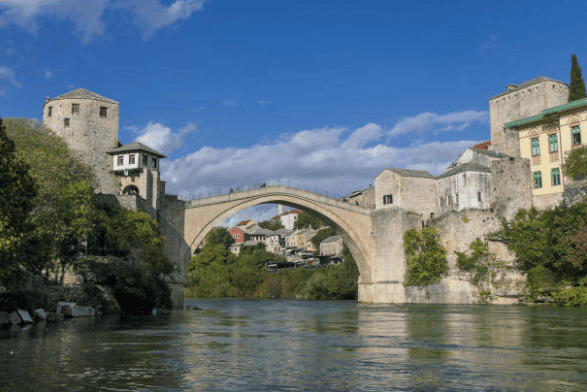
One unique attraction on Stari Most is that local youths often dive off the bridge into the Neretva River, especially during the summer. On my first visit, I didn’t see any divers, but on the second day, I watched two young men in only their underwear preparing to jump off the bridge. It was thrilling and reminded me of my childhood days in the village.
Learning History in Sarajevo
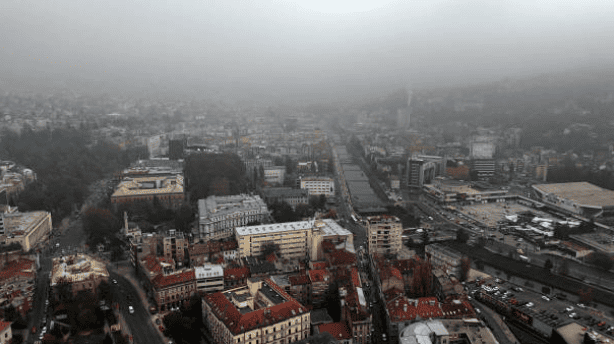
Three days and nights in Mostar gave me a chance to relax. The city’s calm atmosphere, minimal traffic, and cool weather made it feel very comfortable. I became quite fond of this small town, but it was time to move on. My next destination was Sarajevo, the capital of Bosnia and Herzegovina.
The journey from Mostar to Sarajevo took only about three hours. I departed by bus at midday and arrived in the afternoon. Sarajevo’s bus terminal is fairly close to the tourist center and the hostel where I was staying. Bus and tram lines run near the bus and train stations, making it easy to reach the city center.
Sarajevo has a similar atmosphere to Mostar, with a strong Ottoman influence, but it’s larger and has more tall, modern buildings. From the bus station to my hostel, I could already observe the city’s vibe. Bullet marks from the Bosnia-Serbia war are still visible on buildings, even in central Sarajevo.
My accommodation was in the old town, the historic center of Sarajevo. The Ottoman influence is also strong here, with mosques, markets, coffee shops, and houses. But what’s especially interesting about Sarajevo is its World War I history and the Bosnia war.
I recalled learning about World War I, which was triggered by the assassination of the Austrian Archduke near Sarajevo’s City Hall. Memories of watching TV news about the Bosnia-Serbia war during my childhood also came back. The next day, I set out to visit these historical sites, all within the old town.
From the hostel, I walked towards Bascarsija, Sarajevo’s central area. At the “entrance” to Bascarsija stands the Sebilj, a water fountain that has served locals and travelers for centuries. Sarajevo used to have many Sebilj fountains, but only a few remain today.

After passing Bascarsija, I followed the banks of the Miljacka River. Soon, I reached the Latin Bridge, also known as Princip’s Bridge. It looks like a simple, small pedestrian bridge, but it holds deep historical significance.
It was at the end of this bridge that Franz Ferdinand, the Austrian crown prince, and his wife were assassinated on June 28, 1914, sparking the start of World War I. A museum now stands at the spot where Gavrilo Princip shot them, preserving the memory of this pivotal event.

Still along the Miljacka River and not far from the Sarajevo Museum, I saw the yellow and brown Sarajevo City Hall, a relic from the Austro-Hungarian Empire. Although I didn’t spend long here, I continued back to Bascarsija.
Bascarsija is Sarajevo’s old market and cultural hub, established in the 15th century when Isa-Beg Isaković founded the city. This area is full of historical buildings and has become a major tourist attraction in Sarajevo. There’s so much to see and do in Bascarsija.
Nearby is the Gazi Husrev-Bey Mosque, which locals call Begova Dzamija. Built between 1525-1531 during the Ottoman era, it’s the largest historic mosque in Bosnia and Herzegovina and one of the most representative Ottoman buildings in the Balkans.
I visited this mosque a few times for prayers since it was close to my hostel. Next to the Gazi Husrev-Bey Mosque stands the 30-meter Sahat Kula, the tallest of the 21 clock towers built in the country. Its entrance bears the inscription “Pekara Imaret.”
Just a few meters further, at the corner of Saraci and Ferhadija streets, lies Gazi Husrev-Bey’s Bezistan, an enclosed market also known as the Old Bezistan or Great Bezistan. Built around 1540 from natural stone, half of it is underground.
There are four entrances to this bazaar: two on Gazi Husrev Bey Street, one on Ferhadija, and another on Zelenih beretki. The exterior has many display windows, while inside, you’ll find souvenir shops, clothing stalls, and accessory vendors. It’s like a mini version of Istanbul’s Grand Bazaar. I browsed around here briefly before coming across the ruins of Tašlihan.
Tašlihan, one of three caravanserais in Sarajevo (along with Morića Han and Kolobara Han), served travelers and their horses. Caravanserais were large fortress-like structures accommodating entire caravans with horses and merchants.
Tašlihan, or the Stone Inn in English, was built between 1540 and 1543 along the western wall by Ottoman Governor Gazi Husrev Bey. This inn added to the unique bazaar complex, which became Sarajevo’s trade center during the Ottoman period.
Beyond the old city center, Sarajevo has many other interesting places to explore. On another day, I visited Svrzo’s House, an old Ottoman-era residence that’s now a branch of the Sarajevo Museum.
On my way to a local fast-food restaurant, I came across the Vječna Vatra, or Eternal Flame, located at the intersection of Mula Mustafa Bašeskije, Titova, and Ferhadija streets. This monument commemorates the military and civilian victims of World War II in Sarajevo.
A few hundred meters from the Eternal Flame, I found Veliki Park, a large park with tall trees. The park has small pathways leading in all directions and centuries-old tombstones, evidence of the Muslim Čekrekčija Cemetery that once stood here. There’s also a monument dedicated to the children of Sarajevo who died in the recent Bosnia-Herzegovina war.
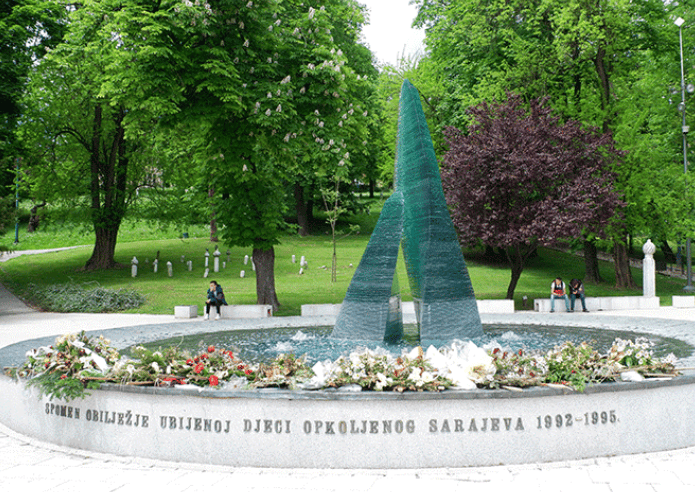
I briefly stopped at the monument before heading back to the hostel. I felt satisfied exploring Sarajevo, though there was still more to see. One important takeaway is that my three-day stay in Sarajevo gave me a deep understanding of history. The road trip through Bosnia and Herzegovina was truly memorable.
